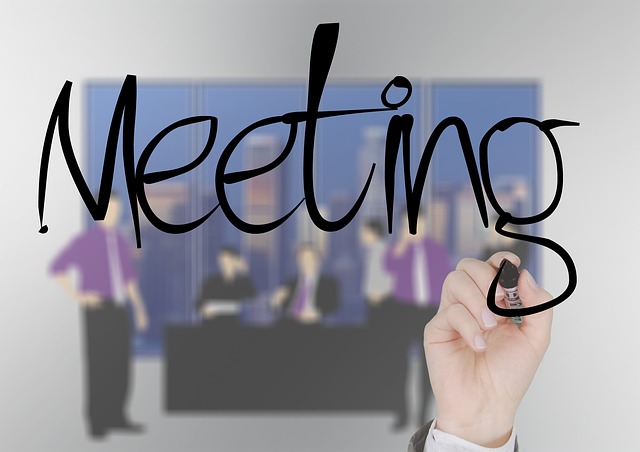
Managing Meetings
- Is your goal to deal with a tough, multifaceted issue?
- Or is to exchange information? Is it a “get to know you” meeting?
- Or are you looking for creative input?
These different goals each require a different type of meeting, and a different style of communication.
Essentially, there are five types of meetings:
- Informational – people exchange information
- Problem-solving – people try to solve a specific problem
- Brain-storming – people define objectives and generate ideas
- Performance review – people review individual and group performance
- Strategic – people wrestle with large issues cutting to the heart of the organization’s future, and set goals and priorities
As you might guess, different styles of communicating work best in each type of meeting. This point has an important corollary: Each style prefers a certain type of meeting.
| Directors: Strategic meetings | Expressers: Brain-storming meetings |
| Thinkers: Problem-solving meetings | Harmonizers: Information-sharing meetings. |
If a particular communication style prevails at a meeting, or if one person’s style dominates a meeting, it can cause the meeting to shift suddenly. This causes a disconnect in people’s minds.
- A brain-storming meeting called by a Director becomes strategic.
- An information-sharing meeting called by an Expresser begins generating ideas.
People come to a meeting thinking it’s one type, only to discover they’ve somehow stumbled into a different universe.
People can derail a meeting simply due to their style.
- Directors’ meetings can be so short/sweet you’ve barely sat down before it’s time to go.
- Expressers’ meetings can drift off into what is charitably referred to as “creative time.”
- Thinkers follow an agenda, and will stick to it even if a million dollar idea comes up.
- Harmonizers may keep things at such a comfortable pace that people start to snooze.
Meeting Type Preferred Communication Style
| Informational | Balance of styles |
| Problem solving | Thinker |
| Brain storming | Expresser |
| Performance review | Thinker |
| Strategic | Balance of styles |
Protocols for Meetings
Skilled communicators know how to modify their style appropriately from meeting to meeting. They also know that a meeting needs preparation in order to be productive.
Preparation can include:
- Giving participants at least two days advance notice (or as much as possible)
- Preparing an agenda and distributing it in advance
- Setting the standard that the meeting will begin on time
- Maintaining a time limit for each item on the agenda
- Agreeing to change the agenda only with participants’ consent
- Agreeing to communicate what transpires at the meeting
- Assigning a meeting coordinator. This person:
- Sends out the agenda
- Arranges the room
- Starts the meeting on time
- Monitors the clock
- Keeps the minutes
- Pushes the group toward action
- Sees that minutes are distributed within 24 hours
- Makes sure the group decides how to share the information from the meeting
Meeting Type Purpose Communication protocols
| Information | Exchange information, reach agreements | Agenda optional Minutes optional |
| Problem solving | Define solutions to problem, reach agreements | Agenda needed Minutes needed |
| Brain storming | Define objectives, generate options, reach agreements | Agenda needed Minutes needed |
| Review | Review individual or group performance; reach agreements | Agenda needed Minutes needed |
| Strategic | Define issues, describe scenarios, set goals, reach agreements | Agenda needed Minutes needed Ground rules needed |
By following these protocols, in conjunction with understanding the different types of meetings, your organization can use meetings in highly productive ways.
Conclusion
This post has illustrated the importance of distinguishing the five types of meetings – and the needs served by each. It has also shown how certain communication styles are more suitable for certain types of meetings. It also described how people often try to shift a meeting into one that matches their style.
This underscores the need to be able to identify not only individual styles, but also group styles. The productivity of a meeting is directly related to how well managed it is. Meetings that ramble result from a failure to follow sound protocols and lay down ground rules.
| Lesson 15: The Habits of Highly Effective Facilitators | Lesson 17: Inner Scripts |
5 Comments
Add yours+ Leave a Comment
You must be logged in to post a comment.


[…] Lesson 16: Managing Meetings […]
[…] Lesson 16: Managing Meetings […]
[…] This post was originally published at CommunicationStyles.org. […]
[…] Essentially, there are five types of meetings: […]
[…] Once in a while, Douglas said, it’s more effective to ask others in the meeting how the dissenter is slowing them down. That, too, can help the meeting run more effectively. […]